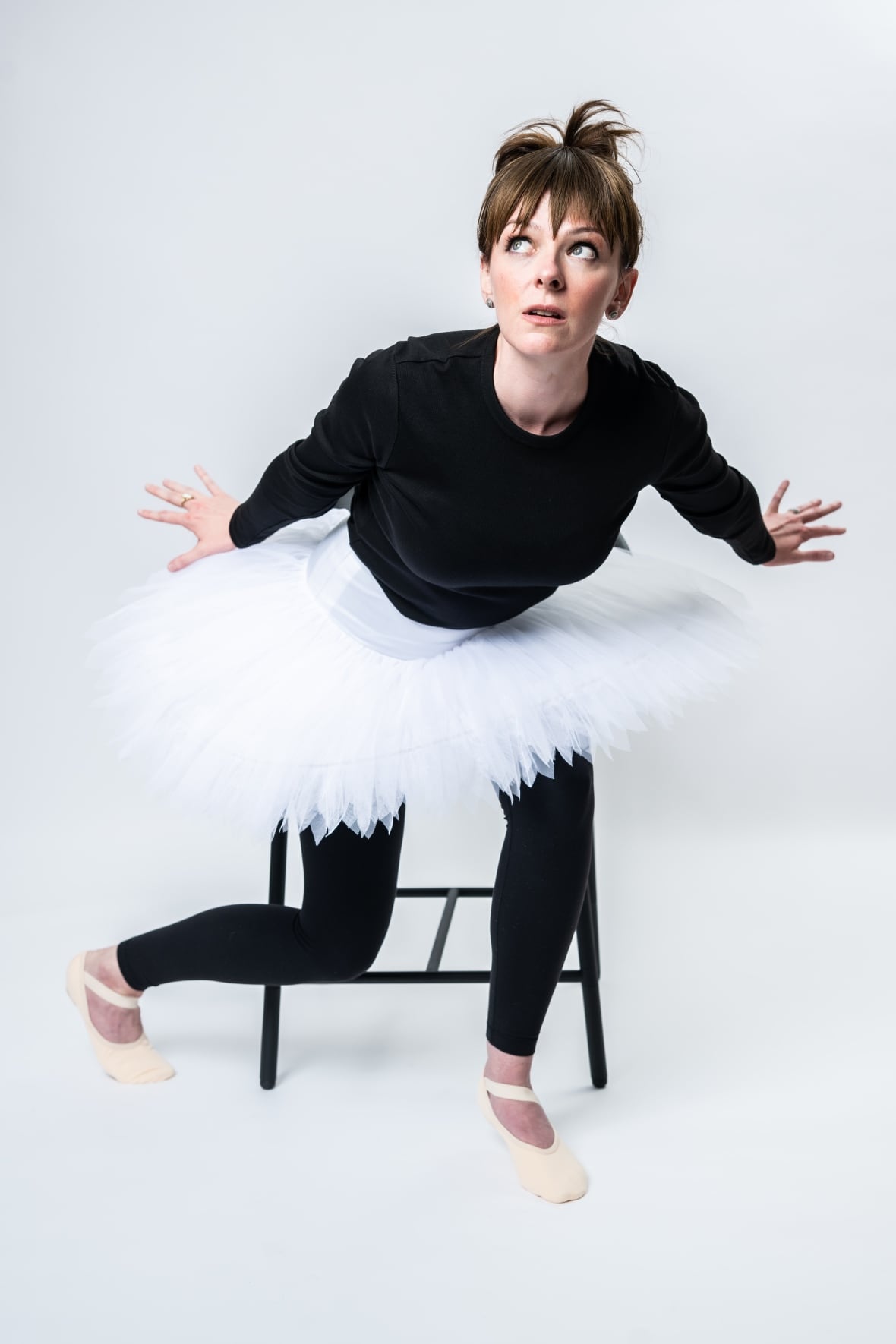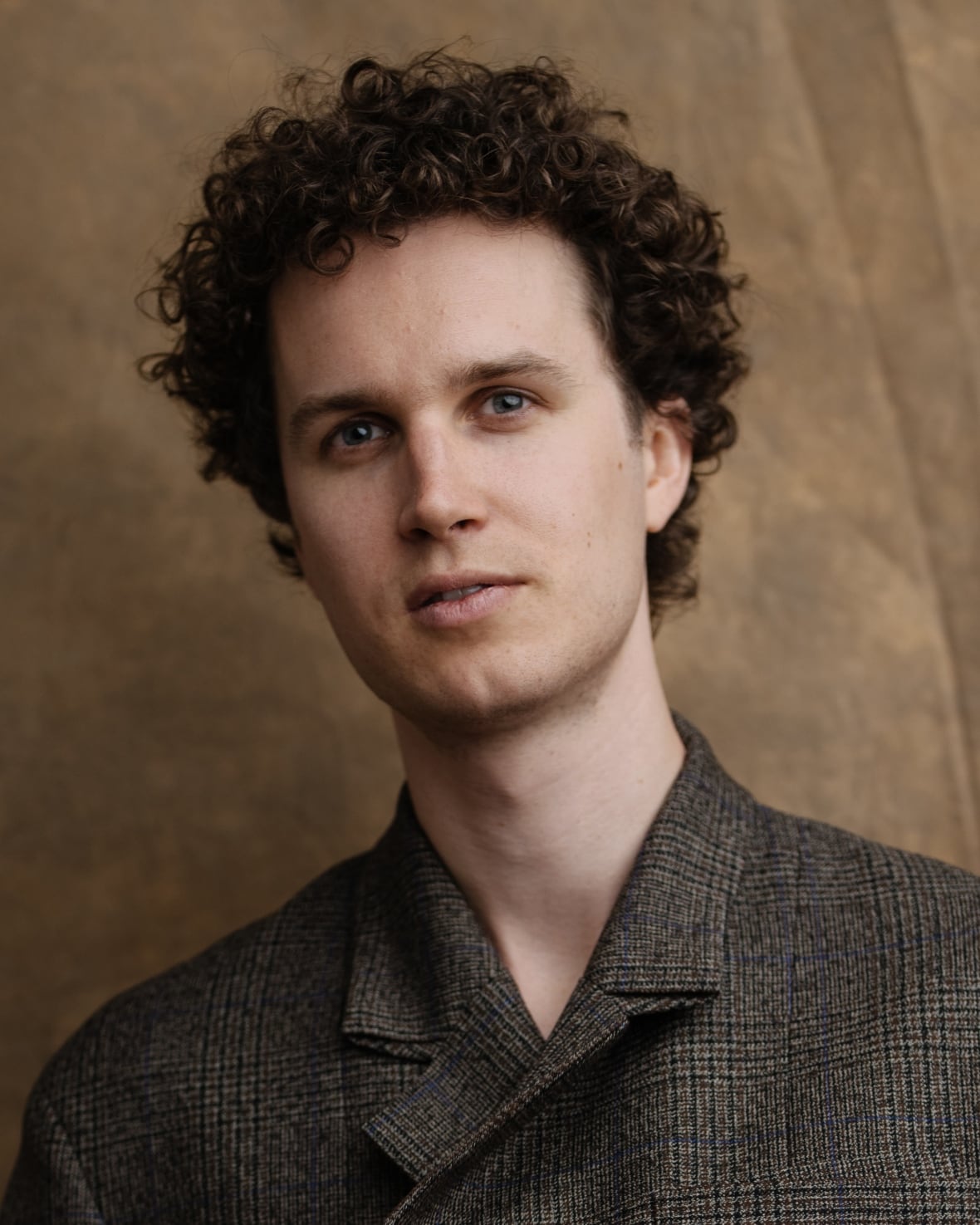What does a dance about blindness look like?
Devon Healey's Rainbow on Mars invites audiences to rethink how they experience performance

When an anticipated artistic work premieres, a question that often lingers in casual conversation is: "Did you see it?"
With the premiere of Rainbow on Mars, Devon Healey is hoping a different question hangs in the air: "Have you ever thought about how you see?"
The artist and scholar's new work, running from Aug. 9–20 at Toronto's Daniels Spectrum, aims to give audiences across the spectrum of sight an encounter with blindness by immersing them in Healey's own journey. Supported through a collaboration with Peripheral Theatre, theatre company Outside the March and the National Ballet of Canada, Rainbow on Mars is an invitation to re-envision how our senses inform our experience of performance.
For Healey, providing an opportunity to explore both blindness and sight "as cultures" and "as performances we do" is fundamental to her work as a creative and an academic.
"It's a commitment of mine to disturb the imaginary that we all collectively share of blindness as something that we don't want — as something that's sad, as lacking," she says.
With the guidance of choreographic collaborator Robert Binet, Rainbow on Mars instead conveys an experience of blindness that Healey calls a "beautiful, intricately choreographed dance that I'm engaged in with myself and with the world around me."
A new role to perform
Blindness began affecting Healey's everyday life after completing actor conservatory training as a young adult. As she worked to book parts in Ontario theatre productions, she found herself performing another role that she "wasn't winning any Oscars for," she says.
"Sight became a character that I thought I needed to perform constantly. I tried for as long as I could to conceal my blindness, because I felt that it would get in the way, or that people wouldn't be open to me as a performer to take on a role."
It was only when she began her graduate research at the University of Toronto that Healey started to accept the role she had been offered, and began exploring blindness as its own performed culture. Now an assistant professor, Healey writes about blindness as its own character. She introduces it to readers with intricate stage directions that resemble a dramatic text.

Healey began the creative process to transform Rainbow on Mars into a performance in 2020. But early on, it became clear that representing her experience of blindness could not be done with spoken words alone.
"I was leaning my body to try to see the price tag of something, or walking through a hallway, thinking that I recognized someone, and saying 'Hi!' to them," says Healey. "There was so much that my body was feeling and communicating … that I think I was in the midst of dance, but didn't have the language."
So when choreographer Robert Binet joined Rainbow on Mars, Healey not only found the language she was missing, she also found a creative partnership that has proven pivotal for both artists.
Moving into blindness
Binet has held many roles in the dance world: He is currently the artistic director for Fall For Dance North and was formerly the choreographic associate at the National Ballet of Canada. But taking on the job of bringing Healey's world to the stage challenged him to refocus his priorities as a dance artist.
"Ballet is so much about how things look.… I grew up with a mirror in front of me all day, every day, trying to look a certain way" explains Binet. "It's just been really beautiful to start to move away from that."

Binet's responsibilities include choreographing the young dancers of Rainbow on Mars' movement ensemble, who shared similar sentiments about Healey's invitation to rethink the importance of sight in their dance practices.
"There was quite an emotional conversation at the end of the first workshop where they were saying they didn't realize they had so much to offer beyond how they looked," says Binet. "If that's something this project can offer a young dancer, that's very powerful and valuable."
As the creative process progressed, Healey and Binet found that this dance could not be properly captured for blind audiences by merely describing its "look." The pair subsequently developed a method called Immersive Descriptive Audio (IDA) for Rainbow on Mars, which moves beyond simply "representing sight" through vocal narration by incorporating a variety of sound effects and other technologies to convey the feeling of dancing.
Healey clarifies that because IDA must be written from the perspective of a blind person, it does not have the goal of "filling blind audience members in on the gorgeous visual feast of dance." Rather, IDA can be imagined as a company member that is part of the work itself, describing the experience of performing in a way that incorporates other senses. Binet has since introduced the method to his choreographic processes at the Royal Ballet in Britain and the Queensland Ballet in Australia.
Seeing beyond sight
What might be expected in watching a performance that doesn't need to be seen to be enjoyed? Healey emphasizes that Rainbow on Mars was created to give all audience members some sense of moving through the world with blindness — not as an absence of sight, but as "a bit of a restlessness within them," she says.
"If you are profoundly blind — meaning that sightedness is not how you move through the world — you're getting a show that has been imagined for you," Healey explains. "It's describing a world that we could all plant ourselves in, and it's not forcing sight or vision on you."
Binet says the creative team and cast, which is made up of both blind and sighted artists, "almost want to give sighted people a sense that their eyes aren't giving them the complete picture."
Healey hopes audiences leave with a desire to "move into the world not satisfied with mere images, but to really try to feel what lingers beyond the edges of a frame."
Rainbow on Mars definitely gives new meaning to the phrase: "Did you see it?"
Rainbow on Mars runs Aug. 9–20 at Daniels Spectrum in Toronto.

